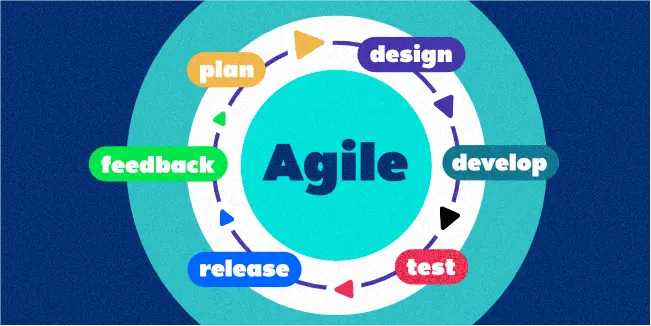In the ever-evolving landscape of business, the importance of efficient spend management strategies cannot be overstated. Organizations of all sizes and industries face the challenge of optimizing their financial resources to remain competitive and profitable.
<H2> Understanding Spend Management Strategies
Before we jump into the agile aspect of spend management, let’s have a clear understanding of what business spend management is. Business spend management encompasses the processes, tools, and techniques used by organizations to control, monitor, and optimize their expenditures.
The primary goal of spend management strategies is to ensure that an organization’s financial resources are spent wisely and in line with its objectives. In doing so, companies can enhance their financial health, reduce unnecessary costs, and achieve better transparency and compliance in their operations.
<H2> The Traditional Approach
Historically, spend management strategies were perceived as a cumbersome, time-consuming task. They involved stacks of paperwork, manual data entry, and complex approval processes. The rigidity of these processes often led to inefficiencies, missed opportunities, and errors. Companies struggled to adapt to the rapidly changing business environment, where agility and quick decision-making are key.
<H2> The Agile Paradigm
The agile approach, initially rooted in software development, has now found applications across various domains, including spend management. Agile spend management is about creating a more flexible, responsive, and collaborative environment within an organization to effectively control costs and improve financial outcomes.
<H2> Embracing Agile Spend Management
<H3> Quick Decision-Making and Enhanced Transparency: In the modern business world, the ability to make swift decisions is critical. Agile spend management allows organizations to respond rapidly to market changes, emerging opportunities, and potential threats. With agile spend management, you can maintain complete visibility into your financial data, transactions, and approvals. This transparency not only helps in compliance but also in building trust with your stakeholders.
<H3> Data-Driven Insights and Collaborative Approach: Agile spend management leverages data analytics to provide valuable insights into your spending patterns. By harnessing the power of data, you can identify trends, pinpoint areas of overspending, and make informed decisions based on real-time information. Collaboration is at the heart of agility. Agile spend management encourages cross-functional collaboration among departments, suppliers, and stakeholders. This approach promotes innovative solutions and helps in cost reduction and optimization.
<H3> Automation and Continuous Improvement: One of the significant advancements in agile spend management is the automation of repetitive tasks. Processes such as invoice processing and expense tracking can be streamlined, reducing human errors and saving time. By constantly reviewing and improving your strategies, you can adapt to the changing landscape and make data-driven decisions to optimize your spending further.
<H3> Risk Mitigation: Agile spend management also focuses on identifying and mitigating risks associated with spending. By monitoring financial activities closely, you can detect anomalies and potential fraud early, preventing substantial financial losses.
<H2> The Role of Technology
In the journey towards agile spend management, technology plays a pivotal role. The integration of advanced software solutions can revolutionize the way an organization manages its finances. These technologies, often driven by artificial intelligence and machine learning, can provide predictive analytics, identify cost-saving opportunities, and automate routine tasks.
<H2> Unique Approaches to Agile Spend Management
To stand out in the realm of agile spend management, it’s essential to embrace unique approaches:
<H3> Supplier Collaboration Platforms: Consider creating a digital platform for your suppliers. This platform can facilitate communication, streamline the procurement process, and foster long-term relationships. Such collaborations can lead to discounts, better payment terms, and overall cost reductions.
<H3> Green Spend Management: Sustainability is an increasingly important factor in business. By incorporating eco-friendly spend management strategies, such as preferring environmentally responsible suppliers or reducing paper usage, you can not only save money but also improve your company’s image.
<H3> Marketplace Integration: Consider integrating with online marketplaces where you can find products and services at competitive prices. This approach can be particularly advantageous for indirect procurement categories.
<H3> Blockchain for Expense Management: Blockchain technology can provide a highly secure and transparent ledger for expense management, reducing fraud and ensuring compliance.
<H2> Conclusion
In a dynamic business environment, traditional approaches to spend management can be limiting. Agile spend management provides a pathway to adaptation and success in the modern world. It empowers organizations to make quick decisions, enhance transparency, leverage data, and embrace automation, all while fostering a collaborative and innovative culture.
FAQs:
Q1: What Exactly Is Agile Spend Management?
Answer: Agile Spend Management is a contemporary approach to financial management within organizations. It places a strong emphasis on adaptability, collaboration, and data-informed decision-making. This approach empowers businesses to swiftly respond to changes, enhance financial transparency, and fine-tune their spending strategies for optimum efficiency.
Q2: How Does Agile Spend Management Positively Impact Businesses?
Answer: Agile Spend Management brings substantial benefits to businesses by facilitating quicker decision-making, offering a clearer view of financial operations, and leveraging data for strategic insights. Furthermore, it fosters a culture of collaboration, reduces risks, and automates routine tasks, all of which contribute to significant cost savings and an improved financial position.
Q3: What Innovative Strategies Can Be Employed in Agile Spend Management?
Answer: Agile Spend Management thrives on innovation. Consider implementing unique strategies such as developing supplier collaboration platforms, actively involving employees in cost-saving initiatives, adopting eco-conscious spending practices, integrating with online marketplaces, and exploring the secure potential of blockchain for expense management. These approaches not only set businesses apart but also help them navigate the ever-evolving landscape of spend management successfully.






